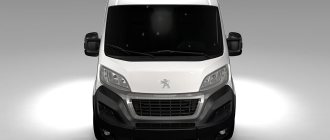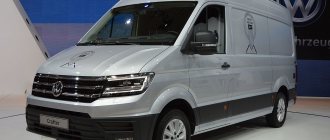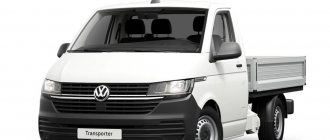Home » Boxer » A little about the fuel consumption of the Peugeot Boxer - complete information! 352
Peugeot Boxer fuel consumption
When purchasing a car in a store or from a private person, we always ask the question: what is the fuel consumption of the car? How much diesel or gasoline is consumed per 100 kilometers? This is one of the main criteria for selecting equipment. What determines the consumption of a car, in particular, a Peugeot Boxer , let's figure it out together.
Peugeot Bipper fuel consumption
Real fuel consumption on Peugeot Bipper cars. Peugeot Bipper fuel consumption rates and actual data of Peugeot Bipper owners. How to reduce fuel consumption - reviews from owners. Gasoline consumption and diesel consumption comparison table.
Select the model and modification below:
| Modification | Recommended fuel | Consumption in the city | Highway consumption | Mixed cycle |
| Bipper / 1.4 MT (73 hp) (2007) | AI-95 | 8.3 l | 5.6 l | 6.6 l |
| Bipper / 1.4d MT (70 hp) (2007) | diesel fuel | 5.7 l | 3.8 l | 4.5 l |
What can affect increased fuel consumption?
Objective reasons include:
- vehicle dimensions,
- what the car is “shod” in (tires used, its size),
- load of the machine, its overload,
- power unit power,
- gearbox used: automatic or manual transmission,
- fuel quality,
- operating conditions (highway/city/country road/off-road),
- rack mounted on the roof of a car,
- counter flow of air,
- season (summer/winter),
- year of car manufacture,
- total mileage since the date of sale,
- car driving style.
The fuel consumption of the Peugeot Boxer is affected by the above reasons that we are talking about - objective ones. Increased fuel costs may be accompanied by a number of subjective reasons, which we will talk about later. Now let's find out what power units, gearboxes, are installed on the “French boxer”.
Line of power units
At the beginning of their journey, cars were offered with one 2-liter gasoline engine. Power was 109 hp. With. Feature: two swirl chamber diesel power plants, the volume of which was respectively:
- 1905 cm³.
- 2446 cm³.
Since 2000, on heavy versions of the Boxer with a total operating weight of 3.2–3.5 tons, more economical and modern diesel units of 2.8 liters for four cylinders (2.8HDi) with 128 horses were placed under the hood. Equipped with a turbocharger with an intercooling system. The engine was combined with a 5-speed manual transmission, specially designed for this car.
The French Boxer came to the consumer in four modifications. The engine range is represented by five power units, the volume of which was:
- 1900,
- 2000, 2300,
- 2500
- and 2800 cc. see accordingly.
Engine power ranged from 68 to 128 horsepower. There was a separate 2.0 l/110 horsepower engine. The type of fuel consumed is gasoline. The engine was coupled with a four-speed automatic transmission. And three-liter power units with a capacity of 145, 156 and 177 horsepower.
About fuel consumption and operating trends under certain conditions
Let's see how fuel is consumed on a Peugeot Boxer by year of production of the vehicle using the Boxer Combi transformer as an example.
| Fuel consumption Peugeot Boxer Combi transformer ( l / 100 km ) | |||||
| year | Diesel volume | city | track | Mixed cycle | |
| 1 | 1996 | 1,9 | 7,5 | 8,5 | 9,5 |
| 2 | 2000 | 1,9 | 7,0 | 8,5 | 10,0 |
| 3 | 2008 | 2,2 | 10,0 | 11,5 | 13,0 |
| 4 | 2010 | 2,2 | 8,8 | 8,3 | 8,9 |
| 5 | 2011 | 2,2 | 15,3 | 11,8 | 13,6 |
| 6 | 2012 | 2,2 | 6,7 | 5,3 | 6,0 |
| 7 | 2013 | 2,2 | 7,3 | 7,0 | 7,7 |
| 8 | 2014 | 2,2 | 10,5 | 11,6 | 11,5 |
Certain trends and patterns can be traced in fuel consumption during operation of the Peugeot Boxer Combi transformer cargo-passenger minibus. In comparison, the fuel consumption of a Peugeot Boxer 2.2 diesel with a 2HDi power unit is 8.6 liters of diesel fuel per 100 km .
Fuel consumption on Peugeot Boxer Fourgon
Let's look at the diesel fuel consumption of a Peugeot Boxer equipped with a diesel power plant. Let's find out consumption on the road, within the city, mixed and off-road. Let's see what happens in fact.
Advantages and disadvantages of the model. Toyota rav4
In this case, there is no need to turn off the engine, because starting the engine too often will only lead to excess consumption and additional wear on the starter and battery. By the way, such an improvement is not always recommended, because the driver will more often run into, in his opinion, slight irregularities without feeling them, thereby quickly rendering the levers unusable.
| Modification | Recommended fuel | Consumption in the city | Highway consumption | Mixed cycle |
| Bipper / 1.4 MT (73 hp) (2007) | AI-95 | 8.3 l | 5.6 l | 6.6 l |
| Bipper / 1.4d MT (70 hp) (2007) | diesel fuel | 5.7 l | 3.8 l | 4.5 l |
Interpretation of model markings Peugeot Boxer FV 330 L2H1 2.2 HDI 100 Toyota sequoia
| Peugeot fuel consumption The driver just needs to release the gas pedal without turning off the gear, in this case the fuel supply stops completely and the car moves by inertia. The initial cost of the car from official dealers starts from 1,700,000 rubles, for which you will receive a 130-horsepower engine, one airbag, full power accessories, a full-size spare tire and a heater. |
| What gasoline to fill in Peugeot Boxer 2nd generation If you need a minibus, you will have to buy a fellow Citroen Jumper 3, the same car under a different brand, because the Peugeot company is part of the Peugeot-Citroen concept. The Peugeot Boxer model has begun to look more modern; the modern style is mainly maintained by narrow optics on LED side headlights. |
Basic version of Boxer • In the Russian village of Rosva, the Peugeot Boxer is assembled from imported components.
Typical problems and malfunctions
The operation of the Peugeot Boxer, subject to the maintenance regulations, does not raise any questions. The problems that existed at the beginning of production with the service life of the dual-mass flywheel, water getting on the generator and a number of other “childhood sores” have long been eliminated.
Standard car faults
- failure and insufficient power of the stove for the northern regions;
- weak car paintwork. Stones from the wheels of other road users leave chips on the hood and roof;
- breakdowns and replacement of ball joints, springs and struts when operating on broken roads.
The cost of Peugeot maintenance at official service centers corresponds to the level of popular classmates of other brands on the market.
Design
The Peugeot Boxer model has begun to look more modern; the modern style is mainly maintained by narrow optics on LED side headlights. The front end features a rectangular radiator grille with a chrome surround. The massive bumper with small air intakes and round fog lamps is made of unpainted plastic.
The side view has changed less; it is highlighted by swollen wheel arches, stamping lines along the entire height of the body and black molding at the bottom to maintain the style of the Peugeot Boxer 3 bumpers. The rear view “bugs” are installed on two legs and are complemented by turn signal repeaters. They didn't change the door handle at all.
The rear of the van has undergone less changes, with the same straight doors with one handle. Small vertical headlights are complemented by a brake signal repeater at the top. The rear bumper is not as inflated as the front, but also plastic.
Like its brother, the model is offered in 4 options, depending on your transportation needs, you can take the basic model or the longest one.
Dimensions:
- length – 4963-6363 mm;
- width – 2050 mm;
- height – 2254-2760 mm;
- wheelbase – 3000-4035 mm;
- ground clearance – 155-224 mm.
There is also a Chassis version for sale without a rear cargo compartment, only a chassis for self-installation of the necessary equipment. In Russia, such versions are rare.
Among the shortcomings of the body, one can highlight poor paint, which quickly cracks and flies off.
Car device. Owner reviews
Driving behind large cars at a distance of 3-5 meters helps the car not experience air resistance, thereby significantly reducing gasoline consumption. In this case, there is no need to turn off the engine, because starting the engine too often will only lead to excess consumption and additional wear on the starter and battery.
| Engine model | 4H03 | 4H03 |
| Volume | 2.2 l | 2.2 l |
| Type | Turbo diesel | Turbo diesel |
| Number of cylinders | 4 | 4 |
| Number of valves | 16 | 16 |
| Maximum power | 130 hp at 3500 rpm | 150 hp at 3500 rpm |
| Torque | 320 H*m at 2000 rpm | 350 H*m at 1750 rpm |
| Maximum speed | 155 km/h | 142 km/h |
| Fuel consumption | 7.4 l | 8.7 l |
Model history
The ancestor of the family was the Peugeot J5 back in 1981, and the model received the Boxer name in 1994 and was produced with an update in 2002 for 12 years. The second generation of cars that became popular entered the market in 2006, and in 2014 it was deeply restyled. The dimensions increased, the appearance became more modern, the range of body sizes expanded, new engines appeared, the name was transformed into New Boxer. In parallel with the original modifications produced by the auto giant, customers have access to a wide range of transformations based on them. In addition to front-wheel drive, all generations are available with viscous coupling and drive on both axles - a product of close cooperation with Dangel.
Type 230, 1994
The first Peugeot Boxer was equipped with two swirl-chamber diesel engines with a volume of 1.9 and 2.5 liters or a two-liter gasoline power unit and a manual transmission. Engine power ranged from 69 to 109 horsepower, depending on the modification. In 2000, a new 2.8-liter heavy fuel engine with a Common Rail system, intercooler and turbine, developing 128 hp, appeared on vans.
Type 244, 2002
After updating in 2002, the car received the name Tour 244. The appearance has seriously changed. Three wheelbase options provided three body length options. In addition, two roof heights were offered. The cargo compartment contained from 7.5 to 12 cubic meters. The total permitted weight of all modifications of the car was 3.5 tons. In parallel with all-metal vans, minibuses, cargo-passenger Combis, chassis, low-loader platforms and blanks for the construction of motorhomes were produced. The concern installed a robotic gearbox on certain models.
X250, 2006
The next generation of the model, which appeared in 2006, lost its gasoline engine and completely switched to turbo diesel engines. One of them, developed jointly with Ford - Puma 2.2 l - until 2013, had two modifications of 100 and 120 hp. The first was aggregated with 5, and the second with 6-speed manual gearboxes with single- and dual-mass flywheels, respectively. Customers could also choose a three-liter 156-horsepower Sofim. Since 2013, only one version of the modernized Puma with a capacity of 131 hp has remained on the Russian market. and a torque of 320 Nm and only a 6-speed gearbox. A robotic gearbox and all-wheel drive from Dangel are still available. The range of bodies has expanded. By increasing the rear overhang, a fourth length was added. A third roof height has been added. The volume of the cargo compartment varies from 8 to 17 cubic meters. The maximum permitted weight has increased to 4 tons. The list of basic equipment includes ABS, electric windows, driver's airbag and much more.
X290/295, 2014
The manufacturer, which was seriously updated in 2014, calls the car New Boxer, emphasizing that we are not talking about another restyling, but about a new generation. However, modernization of the power structure of the body, engines, and gearboxes continued throughout production. The main differences from the 2006 model are a completely changed front end and an updated cabin interior. Two 2.2 liter turbo diesel engines now develop 131 and 150 hp, and the most powerful 3.0 liter – 180 hp. Electronic stability control, traction control and hill assist have become standard equipment on all versions.
Modifications Vehicle structure
| Peugeot Boxer engine and transmission lifespan The initial cost of the car from official dealers starts at 1,700,000 rubles, for which you will receive a 130-horsepower engine, one airbag, full power accessories, a full-size spare tire and a heater. Fuel consumption, l MIN highway MAX city 200 two hundred 8.60 27.20 300 three hundred 12.90 40.80 400 four hundred 17.20 54.40 500 five hundred 21.50 68.00 600 six hundred 25.80 81.60 700 seven hundred 30.10 95.20 800 eight hundred 34.40 108.80 900 nine hundred 38.70 122.40. |
- lack of steering wheel height adjustment;
- chairs are moved too close;
- poor visibility due to the expansion of the pillars at the bottom;
- Low-recessed niches for small items in the doors.
Modifications
There are many transformations of a minibus, from the purpose to the size of the wheelbase. There are the following types: ambulance, isothermal van, flatbeds (canopy installation is available upon request), manufactured goods body, empty chassis (with the possibility of installing additional seats for passengers), all-metal van (increased number of passengers).
Dimensions can be changed in all elements; they are divided as follows: L1 (H1, H2), L2 (H1, H2, H3), L3 (H2), L3 (H4) The width of the car is the same - 2024 mm.
- L1H1 – wheelbase 2850 mm, length 4749 mm, loading length 2510 mm, external height 2150 mm, loading compartment height 1562 mm;
- L1H2 – differences from L1H1. External height – 2470, loading compartment height – 1881;
- L2H1 – 3200 mm, 5099 mm, 2860 mm, 2150 mm, 1562 mm;
- L2H2 – differences from L1H1. Loading compartment – 1881 mm;
- L2H3 – External height 2725 mm, Loading compartment 2115;
- L3H2 – 3700 mm, 5599 mm, 3360 mm, 2470 mm, 1881 mm;
- L3H4 – external height 2860, loading compartment height – 2280.
Owner reviews: Toyota rav4
Avoid driving on an empty tank as this increases the risk of detonation due to a lean air/fuel mixture and also exposes the fuel pump to unnecessary wear. The dimensions of the Peugeot Boxer make it easy to transport various loads from boxes, boxes to long items; the body length is 4963 mm, width 2050 mm, height 2254 mm.
| Characteristics | Indicators |
| Cylinder diameter (mm) | 86 |
| Number of valves per cylinder | 4 |
| Number of cylinders | 4 |
| Piston stroke (mm) | 94.6 |
| Maximum torque (N•m) | 320 |
| Maximum torque speed, max. (rpm) | 2000 |
| Maximum power speed, min. (rpm) | 3500 |
| Intake type | Common Rail |
| Engine Configuration | Row |
| Boost type | Turbo |
| Availability of intercooler | Eat |
| Engine power (hp) | 120 |
| Engine capacity (cm 3) | 2198 |
| engine's type | Diesel |
Peugeot Boxer 2.2 HDI L3H2 4door. van, 130 hp, 6 manual transmission, 2014 - increased fuel consumption
contents .. 573 574 575 ..Increased fuel consumption
| Check the condition of the air filter replacement element | Blow or replace the air filter element | |
| Leaking power system | Smell of gasoline, fuel leaks | Check the tightness of the connections of the fuel system elements; If a malfunction is detected, replace the corresponding components |
| Spark plugs are faulty: current leakage through cracks in the insulator or carbon deposits on the heat cone, poor contact of the central electrode | Spark plugs are checked on a special stand at a service station. The absence of external damage and sparking between the electrodes on the inverted spark plug does not allow us to draw a conclusion about its functionality | Replace spark plugs |
| Throttle actuator malfunction | Check the travel of the gas pedal, the clearance in the drive (free play of the pedal), make sure that the cable and pedal are not jammed | Replace faulty parts, lubricate the cable with engine oil |
| The idle speed controller or its circuits are faulty | Replace the regulator with a known good one. | Replace the faulty regulator |
| The throttle valve does not close completely | The gap between the throttle valve and the walls of the housing is visible in the light | Replace the throttle assembly |
| Increased pressure in the fuel line due to a faulty pressure regulator | Check the pressure in the fuel system with a pressure gauge (no more than 3.5 bar) | Replace the faulty regulator |
| Leaking injectors | Check the injectors | Replace faulty injectors |
| The coolant temperature sensor or its circuit is faulty | Check the sensor resistance with an ohmmeter at different temperatures | Restore contact in electrical circuits, replace the faulty sensor |
| The oxygen concentration sensor is faulty | You can evaluate the performance of the oxygen concentration sensor and the reliability of its electrical circuit connections using diagnostic equipment at a service station | Restore damaged electrical circuits, replace faulty sensor |
| The ECU or its circuits are faulty | To check, replace the ECU with a known good one. | Replace the faulty ECU, restore damaged electrical circuits |
| Low compression in the engine cylinders (less than 11.0 bar): clearances in the drive are not adjusted, wear or damage to the valves, their guides and seats, stuck or broken piston rings | Check compression | Adjust the clearances in the valve drive. Replace faulty parts |
| The throttle position sensor, absolute pressure and air temperature sensors in the intake manifold or their circuits are faulty | Check the sensors and their circuits | Restore contact in the electrical circuits, replace the faulty sensor(s) |
| Increased resistance to gas movement in the exhaust system | Inspect the exhaust system for dented or damaged pipes, check the condition of the catalytic converter | Replace damaged exhaust system components |
| Malfunctions of the chassis and brake system | Check the chassis and brake system | Adjust the wheel alignment angles, replace faulty chassis parts, and troubleshoot the brake system. |
Reasons for high fuel consumption
There are several common mistakes that inexperienced drivers make that lead to excessive fuel consumption. Remember that excess gasoline or diesel fuel will be consumed when:
The operation of the air conditioner or climate control system. The operation of these devices is related to the operation of the compressor. After all, to rotate the pump pulley, energy is required, which is taken from the rotating crankshaft. And it requires additional fuel. The operation of the heating system. This applies not only to the operation of the “stove”, but also to heated seats, windows and mirrors (in cars where these options are provided). The logic here is similar to the situation described above. Sharp acceleration. If you like to pull away quickly at traffic lights or other places, then be prepared for the fact that your car will consume more fuel than usual. This is due to the fact that any transient process (in this case, setting the machine in motion) is associated with increased energy consumption. And the sharper it is, the more energy is needed. Therefore, try to move off smoothly. This way you will not only save fuel, but also save tires, clutch and power unit components. Engine running at high speeds. Try not to over-gas. This will not only save fuel for your car, but will also have a positive effect on the overall performance of the engine. Using low-quality fuel. Try to refuel at trusted gas stations and fill the tank with the brand of fuel recommended by the car manufacturer. After all, bad fuel burns worse, provides insufficient energy and requires additional energy consumption.
Technical reasons for increased fuel consumption
First, let's look at the technical problems that contribute to increased gas mileage in a car. Let's find out the most common reasons related to the engine and other elements that increase consumption.
Engine wear
Usually occurs due to high mileage of the car or due to improper use. Some points related to engine operation:
coolant temperature is lower than calculated; wear of the cylinder-piston group; wear of the crank mechanism; wear of the gas distribution mechanism and unadjusted valve clearances.
Clutch wear
When the driver needs to keep high revs in order to get off the road and switch to a higher gear, this directly affects fuel consumption. In this case, replacing the clutch will help.
One of the reasons for increased fuel consumption is clutch disc wear. The situation here is quite simple. During the starting process, the engine consumes more fuel than at constant speed. This fact is present even with a working clutch. If the disk or other parts of the system are faulty, then it turns out that fuel is consumed, and the car stands still. The more often the car starts moving, the greater the excess fuel consumption occurs.
In critical cases, a similar situation can occur even when driving in constant mode. That is, when the clutch disc does not ensure synchronous rotation of the engine and gearbox. This situation, although rare, can happen in the most “neglected” cases.
Diagnosing clutch wear is quite simple. To do this, you need to put the car on the handbrake, engage fifth or fourth gear (depending on the gearbox, that is, the highest) and try to get going. If you do not turn off the engine with gas, this means that the clutch needs to be repaired or completely replaced.
Ignition set incorrectly
Incorrectly set ignition also causes increased fuel consumption. In particular, if the engine “troubles”, then gasoline from the idle cylinder is released directly into the exhaust system. This leads not only to excessive fuel consumption, but also to increased wear of the catalyst.
If the ignition is simply set incorrectly, then a situation arises when the fuel does not burn completely. That is, a spark occurs before the fuel mixture appears in the cylinder in full, or after that. In any case, this leads to its incomplete combustion. This automatically means that fuel is wasted.
Therefore, always monitor the condition of the ignition system. The amount of fuel consumed directly depends on this. In addition, an incorrectly configured ignition system can cause problems when starting the engine.
Tire wear
If the tires are worn out enough or the pressure in them is less than normal, this will also lead to the car starting to “eat” more than it should. In such a situation, it is necessary to replace the tires and regularly check the tire pressure. Low-profile tires with a wide tread create increased resistance and, accordingly, increased fuel consumption.
Malfunctions of the brake system They are different, let’s consider those that lead to incomplete release of the calipers, when the so-called “wedging” occurs. If the caliper is not fully unclenched, then over time not only the brake pads, but also the discs become unusable. Due to excessive friction and resistance, fuel consumption naturally increases.
Broken spark plugs
Due to unsuitable spark plugs, the car does not operate correctly, which results in additional load on the engine. This leads not only to high fuel consumption, but also to a general deterioration in performance. To avoid this, you need to check the spark plugs. Such a check includes examining the color of carbon deposits, measuring the electrode gap, and checking the resistor for breakdown. It is also worth paying attention to the junction of the white insulator to the threaded part of the spark plug - a red coating is unacceptable.
Clogged injectors or carburetor
Clogged injectors are one of the most common causes of excessive fuel consumption. They become clogged due to natural causes. These include the use of low-quality gasoline, untimely replacement of the fuel filter, dirt getting into the engine compartment, and so on.
When the injectors are clogged, the shape of the fuel spray pattern in the combustion chamber is disrupted. Because of this, the formation of the fuel mixture is disrupted. That is, this process uses more gasoline than is necessary under normal conditions.
In some cases, due to clogged injectors, the engine may begin to “trouble.” This is expressed in a decrease in the dynamic characteristics of the car. It is also possible for the engine to operate for a long time at high speeds, even in idle mode. This naturally leads to increased fuel consumption.
Similar reasoning is valid for cars with a carburetor engine. When the carburetor becomes clogged, the same situation arises with excessive consumption of gasoline and a drop in dynamic characteristics.
Therefore, always monitor the condition of the fuel system, in particular, the injectors on an injection engine and the carburetor on a carburetor. Their clogging is a direct cause of excessive fuel consumption.
Low-octane fuel also has a great effect on consumption (low price and poor quality come with quantity).
Damage to the lambda probe or mass air flow sensor
Failure of the oxygen sensor (lambda probe) can also lead to significant excess fuel consumption. Its task is to control the amount of oxygen that goes into the fuel mixture. Therefore, if this sensor is faulty, the mixture will be created incorrectly, and this will lead to excessive fuel consumption.
The lambda probe is quite fragile. There are a number of reasons why it can fail. Among them:
depressurization of its body and penetration of exhaust gases into it; overheating of the sensor (this may be caused by incorrect operation of the ignition system); natural aging and wear; problems with the car's electrical network; mechanical damage to the sensor. Similar reasoning applies to the mass air flow sensor (MAF). It is designed to regulate the level of air supply to the engine cylinders. Sensor malfunctions are easy to identify. As a rule, in this case the engine begins to operate unstably, especially at idle (very high or low “jumping” speeds), loss of dynamic characteristics (the car accelerates poorly). The mass air flow sensor cannot be repaired. It can only be replaced, although cleaning it may temporarily correct the situation.
Clogged air filter
The recommended replacement frequency is every 15,000 km. Timely replacement of the air filter is required, because if it is clogged and you ignore it, then be prepared for the car to have a good appetite.
Consumption is also affected by the use of air filter elements with heavy fabric pre-cleaners, since, as in the case of a clogged filter, air resistance increases. Lightweight filter elements are recommended to minimize air flow resistance.
Specifications
Technical characteristics of Peugeot Boxer 2.2 HDI L3H2 / Peugeot Boxer in the back of 4 doors. van with 130 hp engine, 6-speed manual transmission, produced since 2014
Basic data
- Start of production:
January 2014 - End of production:
in production
- Body:
4 doors van
Engine
- Fuel grade: diesel fuel
- Engine capacity, cubic meters see: 2198
- Valves per cylinder: 4
- Power, hp: 130
- Achieved at vol. per minute: 3500
- Torque, Nm/rev. per minute: 320/2000
- Maximum speed, km/h: 150
- Fuel consumption (combined cycle), l. per 100 km: 8.7
- Fuel consumption (in the city), l. per 100 km: 10.7
- Fuel consumption (outside the city), l. per 100 km: 7.5
- Power system: Direct injection
Drive unit
- Drive type: Front
Transmission
- Transmission: Manual
- Number of steps: 6
Suspension
- Front: Independent - McPherson
- Rear: Dependent - axle on springs
Brakes
- Front: Ventilated disc
- Rear: Disc
Dimensions
- Length, mm: 5998
- Width, mm: 2050
- Height, mm: 2522
- Wheelbase, mm: 4035
- Ground clearance, mm: 158
Other
- Number of seats: 3
- Tire size: 215/70 R15
- Curb weight, kg: 1975
- Permissible weight, kg: 3500
- Fuel tank volume, l: 90
- Turning diameter, m: 14.46
contents .. 573 574 575 ..
History of creation – Toyota rav4
| Technical characteristics of the Peugeot Boxer - dimensions, dimensions of the Peugeot Boxer 2021-2020 The interior of the car is a real mobile office with comfortable chairs, for example, the driver's seat is equipped with adjustable armrests and lateral support, plenty of storage spaces, a storage volume of as much as 73 liters. Low fuel consumption: popular 2.2-liter versions consume 7-8 liters per 100 km in the combined cycle; even minibuses designed for 18 people consume up to 10 11 liters per 100 km. |
| Fuel consumption Peugeot Bipper On the center console in the base there is a regular radio, and in expensive versions it is replaced by a 5-inch audio system display with push-button control. Due to low-quality diesel fuel, the injectors gradually become coked, mechanical wear occurs, a characteristic clicking sound appears, and the pressure regulator fails. |
- Frequent engine breakdowns caused by unscrupulous owners. It is sensitive to the quality of the oil, and drivers try to save as much as possible by buying a cheap version of the oil. As a result, the engine breaks down and a lot of money is wasted.
- Body. When used without periodic washing, the body begins to rust, which is especially important for city residents.
- Sometimes the checkpoint creates problems; to avoid them you need to check it regularly.
- The engine control unit also sometimes suffers. Oxidation occurs due to its location next to the washer reservoir.
Characteristics of Peugeot Boxer • Protects friction surfaces from further wear and dry friction during a cold start.
Peugeot Boxer owner reviews
- Alexander, Lipetsk region. I bought this car for 800 thousand rubles. Refrigerated version produced in 2012, engine with 120 horsepower. The load capacity is 900 kg, the cabin is quiet and spacious, the sound insulation is impeccable, you can talk in a low voice. The car consumes only 10 liters per hundred - this is the average in the city and in the combined cycle, and outside the city it turns out to be 8 liters.
- Rinat, Taganrog. I drive a Peugeot Boxer minibus. I bought a car at the Fortuna dealership, a version with a 1450 kg load capacity. The 120-horsepower engine is not demanding on the quality of diesel fuel and allows you to save fuel - in the city it produces no more than 12 liters, although I have a full-size minibus. The seats can be removed to create a truck. Model 2013.
- Pavel, Irkutsk. I have a Peugeot Boxer in the back of an all-metal van, a solid and versatile car for business. I am an entrepreneur, and the car helps me a lot - this Frenchman is a better purchase than my previous Gazelle, which broke down for every reason and for no reason. The Frenchman is a more powerful and comfortable, roomy, relatively quiet and economical car. The load capacity is about 3500 kg – beyond all praise. The car was produced in 2013, mileage is about 250 thousand kilometers, in excellent condition. The 120-horsepower diesel unit consumes no more than 12 liters per 100 km in the city. In the combined cycle, 9 liters are obtained, according to the trip computer.
- Nikita, Vladivostok. I own an all metal Peugeot Boxer van in metallic grey, it looks amazing. The model was produced in 2013, with 156 thousand mileage at the moment. Now the car is sold at a price of 760 thousand rubles, this is the most current price, you won’t find it cheaper. Besides, I’m not in a particular hurry to sell, the car suits me. Load capacity 1800 kg - I have a version with a higher body. A diesel engine with 120 horsepower consumes 12 liters per hundred.
- Andrey, Kirovsk. I found a used Peugeot Boxer 2008, the price is only 450 thousand rubles. Naturally, I had to take it, because such an offer comes only once a year, if not less often. The car has 200 thousand miles, but is in good condition. The van is capable of carrying up to 1.9 tons of cargo, the traction of the 120-horsepower diesel engine is excellent, and fuel consumption is only 11 liters on average.
- Oleg, Tver region. I drive a Peugeot Boxer minibus. Model 2011 model year, with a current mileage of 95 thousand km. The car is equipped with a 120-horsepower 2.2-liter diesel engine and front-wheel drive. Comfort is excellent, as is cross-country ability. The suspension is energy-intensive and soft, no worse than that of a GAZelle. At the same time, Peugeot stands better on the road and in corners, rolls are small, despite the higher body than that of the GAZelle. Finishing materials and sound insulation are at a high level. Overall, the build quality for the truck is almost perfect. The car drove almost 100 thousand km, and almost never broke down majorly. I only do scheduled maintenance. I work as a private carrier, the passengers are happy. Now there are a lot of orders, everyone wants to go to sea.
- Sergey, Rostov region. I have driven 78 thousand km, I have been driving a Peugeot Boxer since 2015. All-metal Boxer van in excellent condition, with a 131 hp diesel engine. With. – volume 2.2 liters. The six-speed manual works clearly and flawlessly, there are no complaints about its operation. The suspension is energy-intensive, nothing creaks or knocks in the cabin, unlike the GAZelle Next. Fuel consumption is 12 liters when loaded.
- Alexey, Smolensk. I am the owner of a Peugeot Boxer flatbed truck with a load capacity of 1000 kg. The car is 2012, under the hood is a time-tested 2.2-liter diesel unit. Its power is 120 horsepower. The car has traveled 203 thousand kilometers, and will probably last the same amount of time - I’m not going to sell this car, it has great potential for the future. A good workhorse, no worse than its closest competitors. And the Gazelle doesn’t hold a candle to my Frenchman (I mean the latest Next model). The engine is endowed with excellent traction, it does not turn sour at high speeds, and the 6-speed manual transmission works very clearly. Average fuel consumption is 10 liters. The engine is not demanding on fuel quality.
- Vitaly, Chelyabinsk. I drive a Peugeot Boxer as standard. I have a manufactured goods van with a 2.3-liter diesel engine, six-speed manual transmission, front-wheel drive. The current mileage is 106 thousand km, the car is a 2013 model year. I’ve been riding with pleasure for more than five years; it’s an ideal option for work. By the way, I work for myself, fulfilling orders from industrial and commercial enterprises. The car consumes 11 liters per 100 km.
- Georgiy, Leningrad region. I'm happy with the car. I chose the appropriate package. The model was produced in 2010, purchased in 2017 for 600 thousand rubles. Load capacity 980 kg, all metal van. The 100 horsepower diesel unit has excellent traction, although the acceleration dynamics leave much to be desired, especially when loaded. The car consumes 10-11 liters.
- Daniil, Moscow region. I have a refrigerator based on a Peugeot Boxer. This car is worth the money spent. I have been working on it since 2013, the current mileage is 87 thousand kilometers. The car is equipped with a 2.2-liter diesel engine, boosted to 130 horses (an increase of 11 hp relative to the base power), traction and torque are beyond praise, I drive and enjoy the reliability of the car. In addition, it is very economical - in the city it consumes no more than 12 liters, usually it comes out to 10-11 liters if you don’t drive it too hard. The refrigerator handles city traffic without any strain; at first I was pleasantly surprised by this. The car consumes no more than 8 l/100 km on the highway. The cabin is comfortable and spacious, there are no complaints about the quality of materials. The seats are tight, not too soft, unlike the GAZelle.
- Dmitry, Krasnoyarsk. My all-metal van is beyond praise, it makes all sorts of GAZelles that mom don’t worry about. Perhaps the Frenchman cannot be compared with any Russian truck of a similar class. I have a version with a load capacity of 1000 kg, a white body, it looks stylish and original. I bought the car in used condition - 2013 model, mileage 163 thousand km. Diesel consumption 12 l. Now it makes no sense for me to buy GAZelle Next.
Peugeot 306 fuel consumption table by mileage
For factory Boxer engines (2nd generation) on which knock sensors have not previously been adjusted, it is recommended to use AI-95 gasoline with an octane rating of 95 to obtain the calculated specific engine power.
To distinguish models, the manufacturer uses special letter markings:
Peugeot Boxster models
- FV – body type designation: FT – all-metal van; ChC – chassis; Comby – cargo-passenger (in this case a glazed van is presented);
- 330 – total weight of the car – 3000 kg (333 – 3300 kg; 335 – 3500 kg; 440 – 4400 kg);
- L – length of the cargo part of the vehicle (L1 – 2.67 m; L2 – 3.12 m; L3 – 3.705 m; L4 – 4.07 m);
- H – maximum permissible load height (H1 – 1.662 m; H2 – 1.932 m; H3 – 2.172 m);
- 2 HDI 100 – capacity, type and power of the engine (in this case presented: turbodiesel – type; 2.2 l. – capacity; 100 hp. – power).
How long will a Peugeot 306 travel on a full tank?
Comparison of two cars in terms of fuel consumption, fuel tank volume and the distance that the car can travel on one full refueling. There are such types of ambulance, isothermal van, on-board platforms, installation of an awning is available upon request, manufactured goods body, empty chassis with the possibility of installing additional seats for passengers, all-metal van with an increased number of passengers.
Specifications
Peugeot Boxer cargo vans and buses are available in several modifications. Cars with a wheelbase from 3 to 4.03 meters are available for order. The length and height are encrypted in the body designation with the letters L and H with the corresponding number. For example, L3H2 denotes a van of the third length and second height. The marking also contains information about the gross permissible weight. Models with chassis body type are also available. The equipment is equipped with a manual transmission and front-wheel drive. In addition to the factory version, the market includes converted cars and special equipment built by third-party authorized organizations. For example, city and intercity buses, cash-in-transit armored cars, ambulances, transformable cargo-passenger vans, refrigerators, etc.
Engine and transmission
Reliable and durable diesel engine is available in two versions. Power 130 or 150 horsepower. The power unit is equipped with Hdi electronic fuel injection.
Motor features include:
- economical fuel consumption rates of 11 liters in the city and 7.5 liters when operating on intercity highways;
- reliable and confident operation in conjunction with a six-speed manual transmission;
- the four-cylinder 16-valve engine is equipped with an intercooler, turbocharging, and electronic fuel injection;
- a chain is used in the drive of the gas distribution vehicle;
- cars for the Russian market, with rare exceptions, are already equipped with Webasto 5 kW engine heaters, which ensure maintenance of the operating temperature of the coolant when the engine is running;
- maximum speed for cars with engines of 130 and 150 hp. is 155 and 162 km/h respectively.
The latest generation cars sold in Russia are equipped with only a manual transmission with front-wheel drive. Peugeot Boxers with a three-liter diesel engine are also supplied to the foreign market. Such cars are not imported to Russia, just like all-wheel drive modifications of Dangel.
Suspension and ride quality
Stable behavior on the road, dynamics and reliable suspension make the Peugeot Boxer one of the best commercial vehicles. A MacPherson strut is installed at the front, a transverse beam and longitudinal springs are installed at the rear. There is a stabilizer bar. Air suspension on the rear axle is optionally available, but is rare in Russia.
Chassis features:
- the presence of a powerful subframe that can withstand heavy mechanical loads;
- the mounting and design of shock absorbers are strengthened, which increases the reliability of the equipment;
- good handling is a family trait for Peugeot products;
- In the new generation of commercial vehicles, noise insulation has been improved, and engine operation is hardly noticeable in the cabin.
Thanks to a well-designed suspension and innovations introduced by the developers, the car feels confident on the road when fully loaded, when the vehicle weight reaches 4000 kilograms.
Toyota RAV4 • Vehicle structure
| Peugeot Boxer tank capacity. General description of the Peugeot Boxer and technical characteristics of the model. Impressions from the outside A minibus does not require an interior with complex geometric shapes, but clumsy simplicity can be annoying and an eyesore on the road. Engine model 4H03 4H03 Volume 2.2 l 2.2 l Type Turbo diesel Turbo diesel Number of cylinders 4 4 Number of valves 16 16 Maximum power 130 hp. |
- Reinforced front doors.
- Rational arrangement of suspension units. Chassis: Pseudo McPherson. A comfortable 4-speed steering wheel with hydraulic booster, which simplifies the driving process, is equipped with buttons to control the radio.
- Rigid frame.










